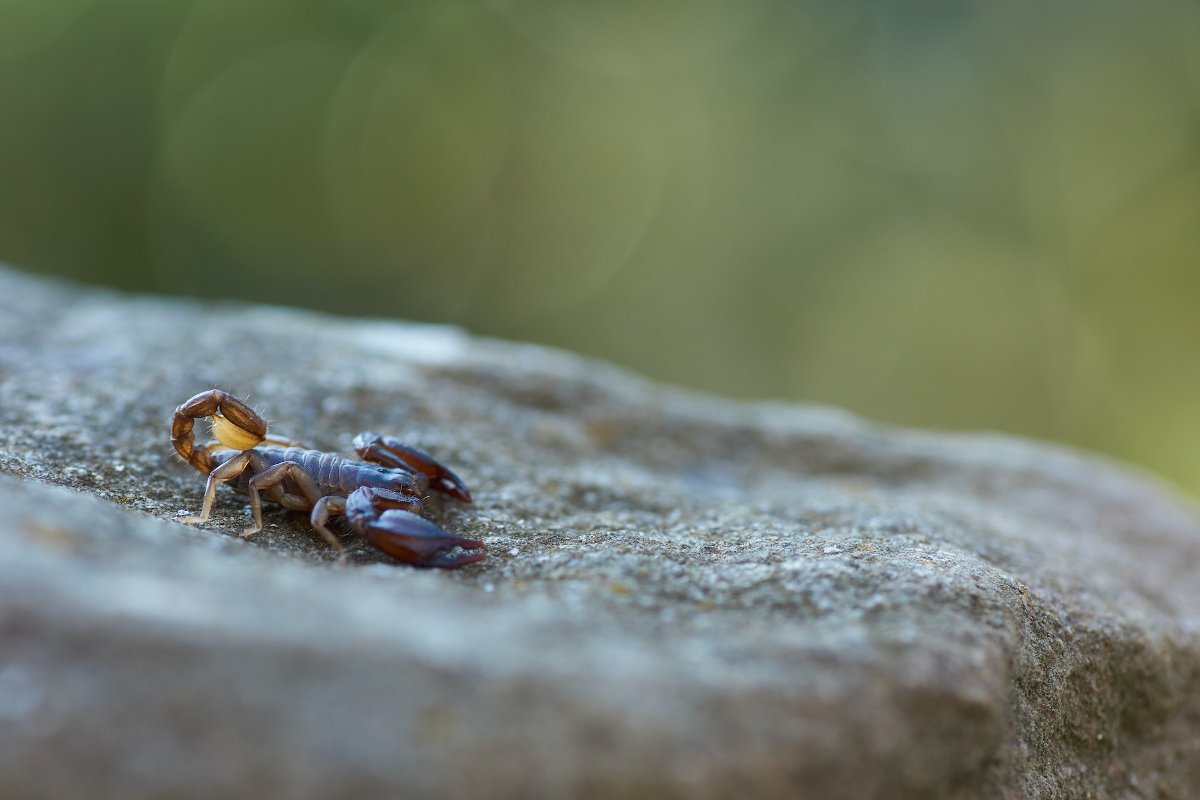Are Scorpions Deadly? Separating Scorpion Facts from Scorpion Myths
Scorpions are fascinating creatures. At least Lauren Esposito, curator of arachnology at the California Academy of Sciences, thinks so. And she’s not wrong. After all, how many other creatures have been around for 450 million years, adapted to survive in some of the harshest conditions on the planet, and are also rave-ready 100% of the time (they glow under a black light)?
Videos by Outdoors
These largely nocturnal creatures don’t tend to get a lot of love, though. Maybe it’s because they’re closely related to spiders (scorpions’ oft-feared eight-legged cousins) or because we’ve evolved to fear things that have the potential to do us harm. Or maybe we’re just freaked out by how alien these venomous creatures look.
Something that definitely doesn’t help their reputation are all the scorpion myths and misconceptions. Fortunately, when you learn what’s true and what’s not, scorpions in the U.S. become far less formidable.

MYTH #1: Scorpions are deadly.
While there are certainly species of scorpions around the world that have deadly stings, the varieties found in the U.S. offer little to worry about. In fact, according to Esposito, there’s only one species in the U.S. with a sting capable of causing serious side effects: the Arizona bark scorpion.
Stings from the Arizona bark scorpion are rare, although, admittedly, there are conflicting numbers for how many deaths have occurred in the last few decades. One report states there have been no scorpion-related deaths reported since 1968, while others suggest numbers closer to about seven deaths from 1999-2014 (and too few to even note after that). Either way, your chances are extremely low.

MYTH #2: You should go to the hospital if you’ve been stung.
If you’ve been stung by a scorpion in the U.S., most of the time, there’s no need to go to the hospital. If you do, you’ll likely receive little more than some Tylenol and a hefty bill. Because scorpion stings aren’t typically life-threatening, even if they are painful, the best you can do is rest, elevate the affected area, apply ice for short periods of time, and take over-the-counter anti-inflammatories, explains Esposito.
The exception is if you or a loved one has been stung by an Arizona bark scorpion, especially if the affected individual has a compromised immune system or is a child, both of whom can be more sensitive to envenomations.
Also, if you’re experiencing neurological issues or trouble breathing after a sting (Arizona bark scorpions inject a neurotoxin that in serious cases can elevate blood pressure and heart rate and—somewhat embarrassingly—cause a painful erection), you should head to the emergency room where antivenom can be swiftly employed.

MYTH #3: Stings are extremely painful.
While the truth behind this rumor depends largely on both the species of scorpion that stings you and your tolerance for pain, you shouldn’t expect to be in agony for days on end after a scorpion sting. On the contrary, Esposito states, only three of the some 100 or so scorpions in the U.S. have a sting as painful as a wasp. The rest will feel milder, closer to the sting of a bee.
Stings of any kind aren’t comfortable, of course. Esposito describes the pain as similar to an electric shock or the touch of a hot pan. A scorpion sting is really a tiny prick combined with injected chemicals that trick your brain into thinking it’s something much worse.
The pain may last for as little as three hours (again, depending on the scorpion), though the average duration is closer to 12 hours. The worst stings from the most venomous species can last up to 48 hours.

MYTH #4: Stings from smaller scorpions are more painful.
Similar to the myth about envenomations by baby rattlesnakes, the widely spread rumor that smaller scorpions have a more painful sting is false. Small or baby scorpions are not more toxic by default. Species vary widely in size, and the pain they impart has more to do with species than size.
MYTH #5: Scorpions are always in attack mode.
Like many creatures that impart fear, scorpions are often seen as aggressive and threatening, but Esposito says that couldn’t be further from the truth.
“They’re not out to get you,” she states. “Their first response is to flee.”
After all, venom is metabolically expensive to produce. Translation: they don’t want to waste venom on something that’s not an immediate threat, because they won’t have sufficient energy to hunt or subdue prey as they recuperate.

MYTH #6: Scorpions can climb and jump to get into precarious places.
While scorpions have certainly been known to crawl into places we’d rather not find them (shoes that resemble a cozy burrow, shower stalls, etc.), they’re actually not the best climbers, Esposito says. They have trouble with exceptionally smooth surfaces like glass, porcelain tile, and stainless steel, none of which offer abrasive surfaces that might help a scorpion keep its footing.
And unlike many spiders, scorpions can’t jump. If you spot one on your kitchen floor or on the picnic table at a campground, there’s no need to worry that it will suddenly leap onto your lap and sting in defense. So, respect the visitor and gently assist it under a bush instead of running away in terror.






